A Global Call to Action
Former President Clinton arms students with tools to bring humanitarian ideas to life
Ioana Patringenaru | April 4, 2011
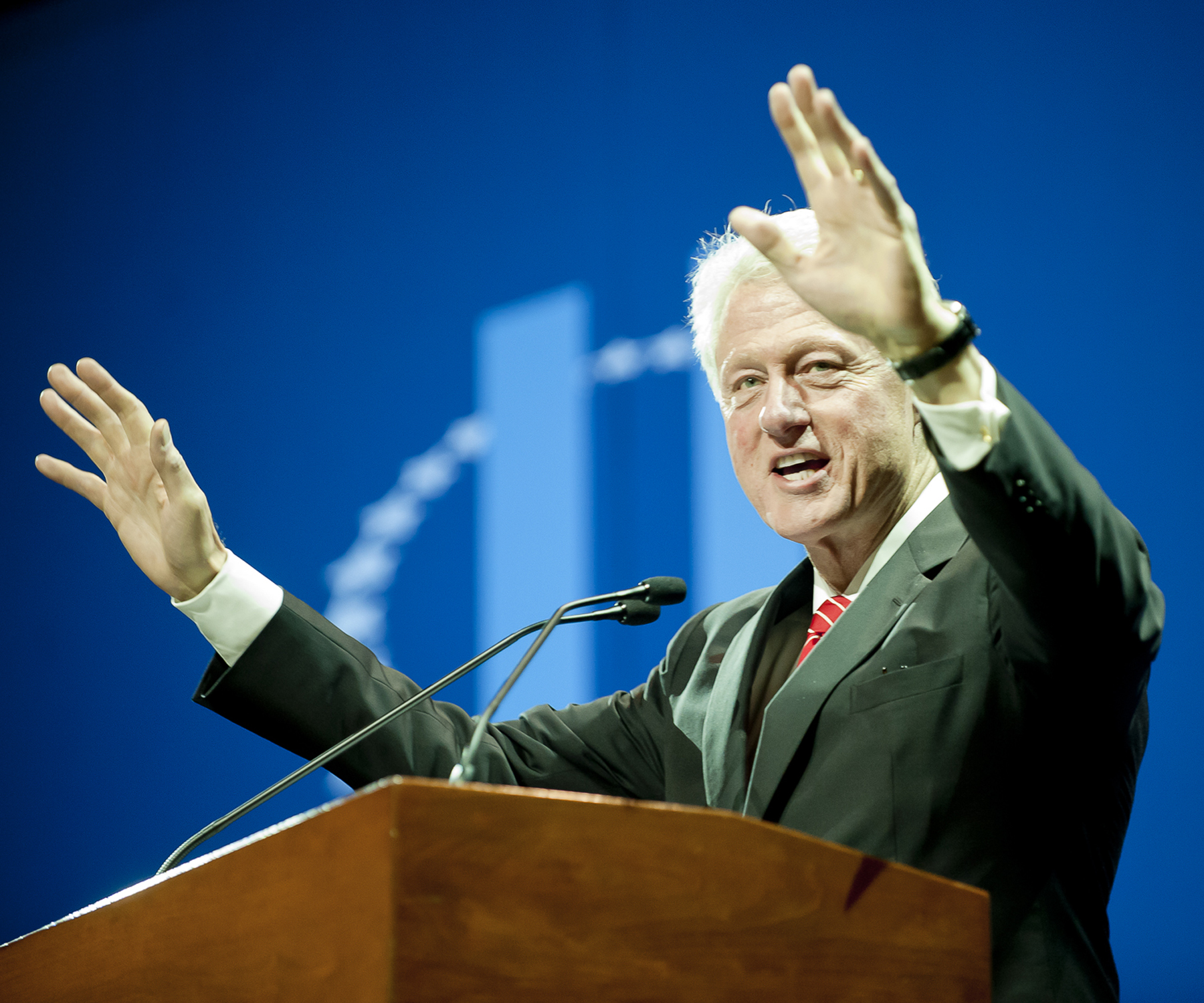
Photos/Erik Jepsen, courtesy of Clinton Global Initiative University
Former President Bill Clinton brought 1,000 student social entrepreneurs from around the globe to UC San Diego this weekend to unleash an epidemic of helping others. They were taking part in the fourth annual Clinton Global Initiative University conference, which aims to help students turn their ideas into action.
“One of my goals is to create young people who are systematic social entrepreneurs, systematic givers who will infect others,” Clinton said.
The conference’s star-studded lineup included Clinton’s daughter, Chelsea, actor Sean Penn, actress Mandy Moore and two NFL players. The impressive roster also included academics and activists. A total of 200 students from UC San Diego also took part.
Clinton said he chose UCSD for the event because of its on-going and consistent commitment to community service. The Washington Monthly repeatedly ranked the campus among the top higher education institutions for contributions faculty, students and staff make to their community, he pointed out. In 2010, the last year for which rankings are available, UCSD was first in the nation.
Community service is at the core of the mission of the conference, also known as CGIU. The event’s aim is to turn young students into philanthropists—hopefully for the rest of their lives, Clinton said.
To take part in CGIU, students had to submit a community service project. The three-day conference was designed to give them the tools to turn their plan into reality. During the opening night session, Clinton singled out Maclen Zilber, who wants to start a campaign to inform UCSD students about a new tax credit that covers the cost of textbooks. Students at UCSD alone could save $2.5 million per year, Clinton said.
Since 2008, when it first started, CGIU raised nearly $2.8 million for college scholarships, $400,000 for humanitarian relief and more than $800,000 for global health programs and hospitals. Students have built 44 schools and libraries, collected more than $100,000 in laptops, books and other educational supplies and introduced more than 3,000 bicycles on college campuses in the United States and around the world, including in undeveloped countries.
Opening night
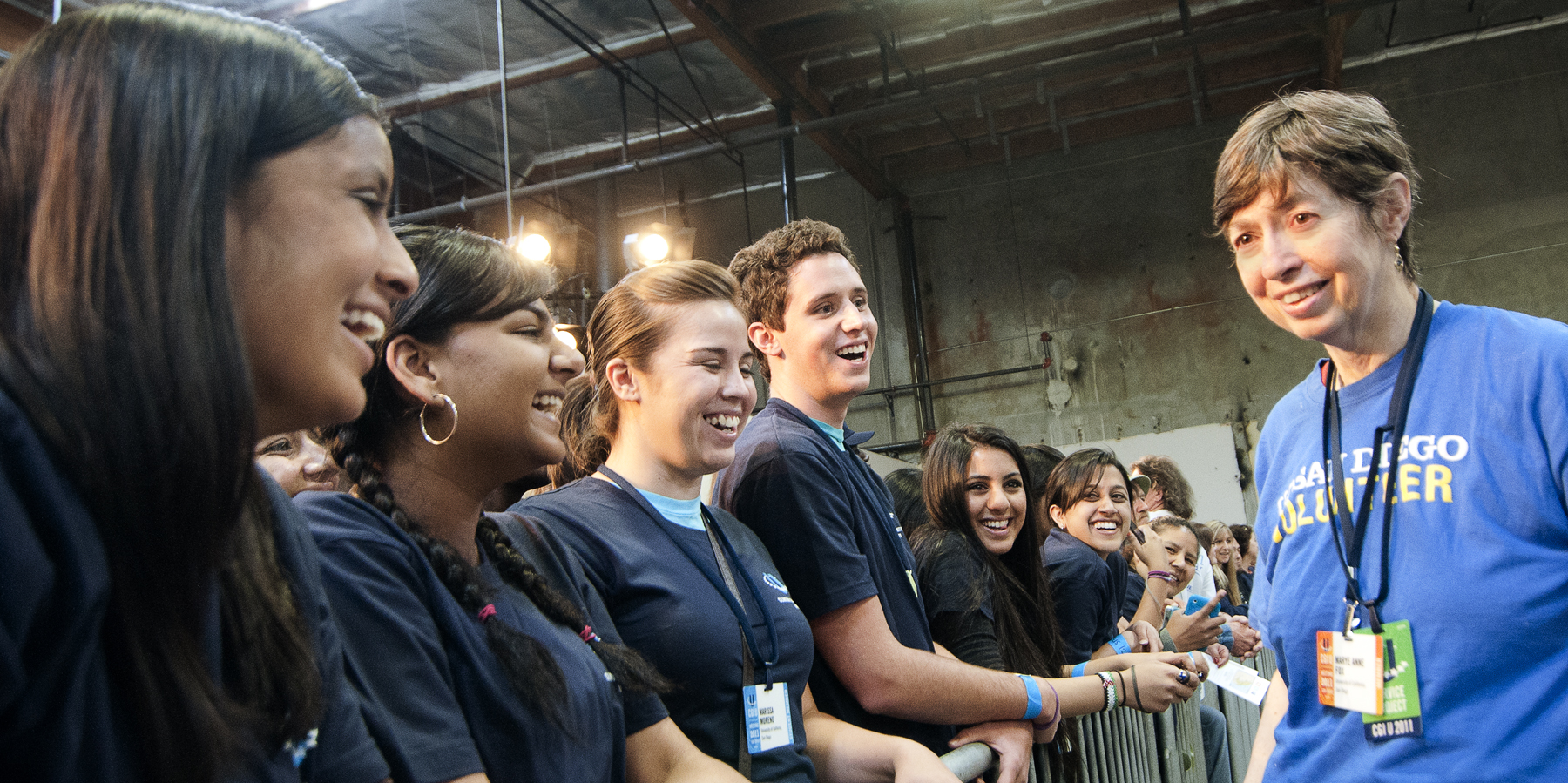
During the conference’s opening session, a crowd of nearly 4,000 rose to its feet and gave the former president a standing ovation. After the session, many students gathered close to the stage, holding up their cell phones to take pictures of Clinton. Some got to shake his hand. The session also featured YouTube co-founder Chad Hurley, Qualcomm CEO Paul Jacobs and UCSD Chancellor Marye Anne Fox.
“You’re here because you’re leaders and visionaries and you have a passion for making the world a better place,” Fox told the audience at RIMAC Arena.
The UCSD community shares that passion, Fox added. UCSD is proud to be ranked first in the nation for public service and is has launched a global health initiative and a new center for global justice, Fox said. For decades, the campus also has been at the forefront of climate change research, she said. It’s also the birthplace of the Keeling Curve, a landmark in the research documenting the rise of CO2 in the Earth’s atmosphere. Today, members of the campus community are working hard to curb greenhouse gas emissions, Fox said. “UC San Diego is committed to improving our world,” she said.
Clinton later said that Fox was one of the first advisors to convince him that steering the United States’ policies towards renewable energy would have a positive impact on the economy.
The importance of science and mathematics
Throughout the conference, well-known academics and businessmen encouraged students to study science and mathematics. Qualcomm CEO Jacobs urged them to educate themselves in science, technology, engineering and math. “What you need to do is get into those fields,” he said. “Because, I will tell you, it’s been my experience that these ideas are literally making an impact at all corners of the world.”
The cell phone is a prime example, Jacobs said. It’s enabled revolutions in Tunisia and Egypt, he said. It gives access to communication and information to people who live on less than $2 a day around the world, he added. Fox example, in Kenya, 90 percent of Internet traffic flows over phone lines. The devices basically put all the knowledge of the human race right at your fingertips, Jacobs said.
The importance of innovation
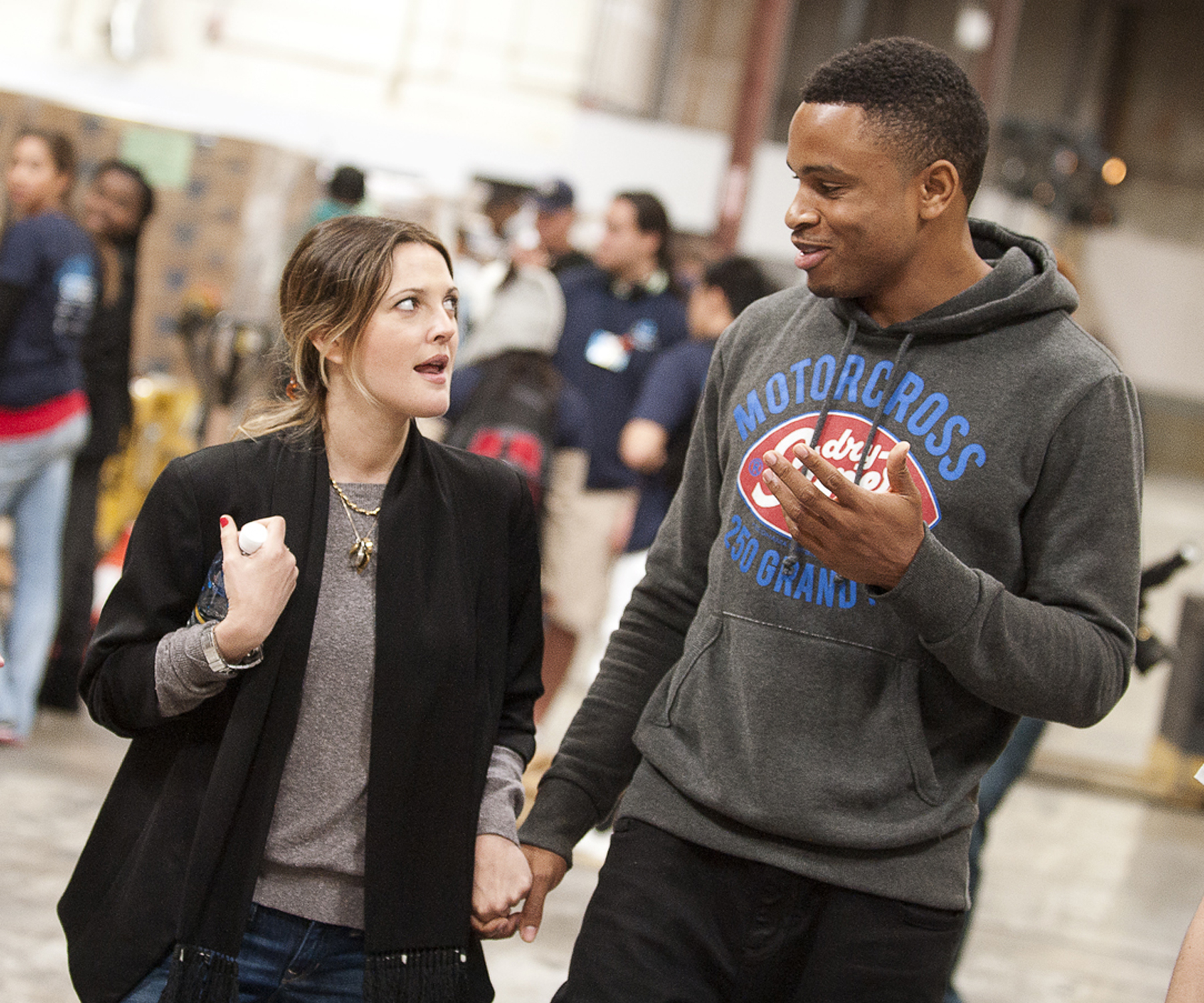
But several entrepreneurs, including YouTube’s Hurley, urged students not to let their lack of technical knowledge get in the way of their drive to innovate. Hurley is a graphic designer by training. But when he worked on creating YouTube, he partnered with engineers to reach the company’s goals, he said. “Ask people what they think of your idea,” he told the audience. “Half the time they’ll think you’re crazy. If they do, you’re probably on to something.”
When Clinton asked what could be done to take social media to the next level, Hurley urged the audience to experiment. “In the past, we had the excuse that technology was out of reach, that it is either too expensive or too complicated,” he said. “I just feel like we’re not in that situation anymore. We need to put ourselves out there.”
Another young innovator echoed his comments. Jessica Matthews’ company, sOccket, is nowhere near as famous as YouTube. Yet it has the potential to spark a revolution in undeveloped countries in Africa, Latin America and Asia. Matthews and three of her female colleagues at Harvard thought they could turn a soccer ball into a power generator. None of them were engineers, Matthews said. But they educated themselves and now have created a prototype that provides enough power to run an LED light for three hours after just 15 minutes of play. The device could help undeveloped countries rid themselves of kerosene lamps and other hazardous devices.
“Don’t assume you have to know everything before you get started,” Matthews said.
Stars and issues
Students also attended panel discussions featuring activists and academics, including Chelsea Clinton, Buffalo Bills’ safety George Wilson and Raiders cornerback Nnamdi Asomugha, environmentalist Van Jones and Marie Tillman, widow of former NFL player turned Army Ranger Pat Tillman, who was killed by friendly fire in Afghanistan. Saturday evening, Clinton took part in a lengthy conversation with Sean Penn, who, in addition to directing and acting in award-winning movies, is running a camp for earthquake victims in Haiti.
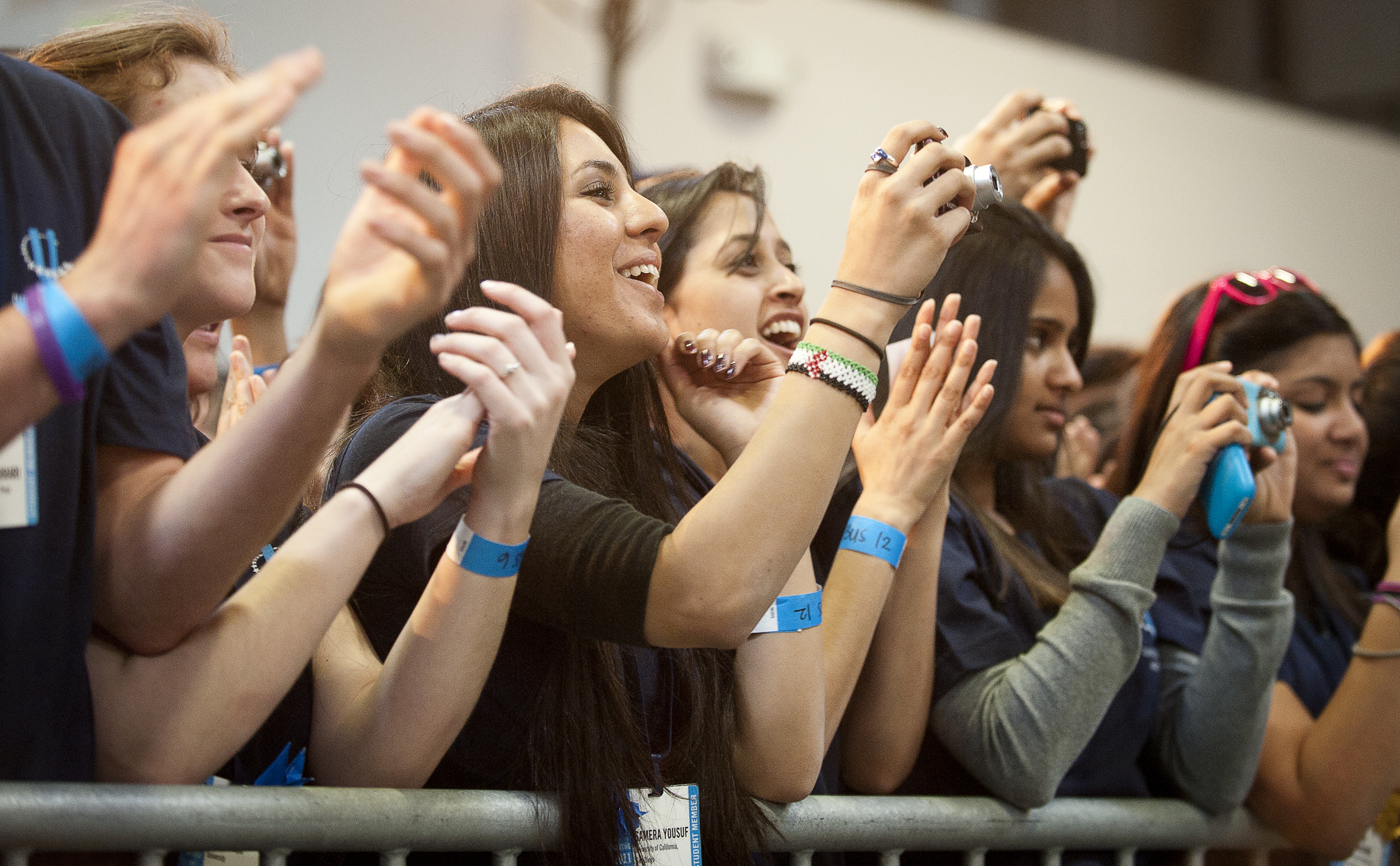
On the last day of the conference, more than 800 volunteers, including Clinton and actresses Drew Barrymore and Mandy Moore, headed to the San Diego Food Bank for a large-scale community service project. Volunteers distributed food to low-income families and military families; packaged food for seniors; painted a mural; and worked on landscaping around the food bank, among other efforts. Clinton spent quite a bit of time packing backpacks with food and supplies for low-income children. He also handed out food to families.
“It was really an exciting day,” said Emily Marx, director of UCSD’s Center for Student Involvement, who helped coordinate the effort. “People rolled up their sleeves and did a lot of great work.”
Student projects
During the three-day event, aspiring innovators tried to get as many glimpses of celebrities as they could. Heyman Oo, a student at the UCSD School of Medicine, got to attend a Clinton press conference.
Oo and fellow medical school student Sam Keller plan to train refugees settling in San Diego to help them get better medical care. Oo, whose family came here from Burma, has some first-hand knowledge of refugees’ struggles. Many of them have never seen a doctor, she said. They also have no idea how to navigate the United States’ complex medical insurance system.
Oo and Keller plan to help refugees figure out when to seek medical care, what kind of questions to ask doctors and how to pick up their prescriptions. They also plan to conduct before-and-after surveys to see if training was effective. The ultimate goal is to make this kind of training a part of medical school curriculum, Oo said. “Patients should be educated too,” she said.
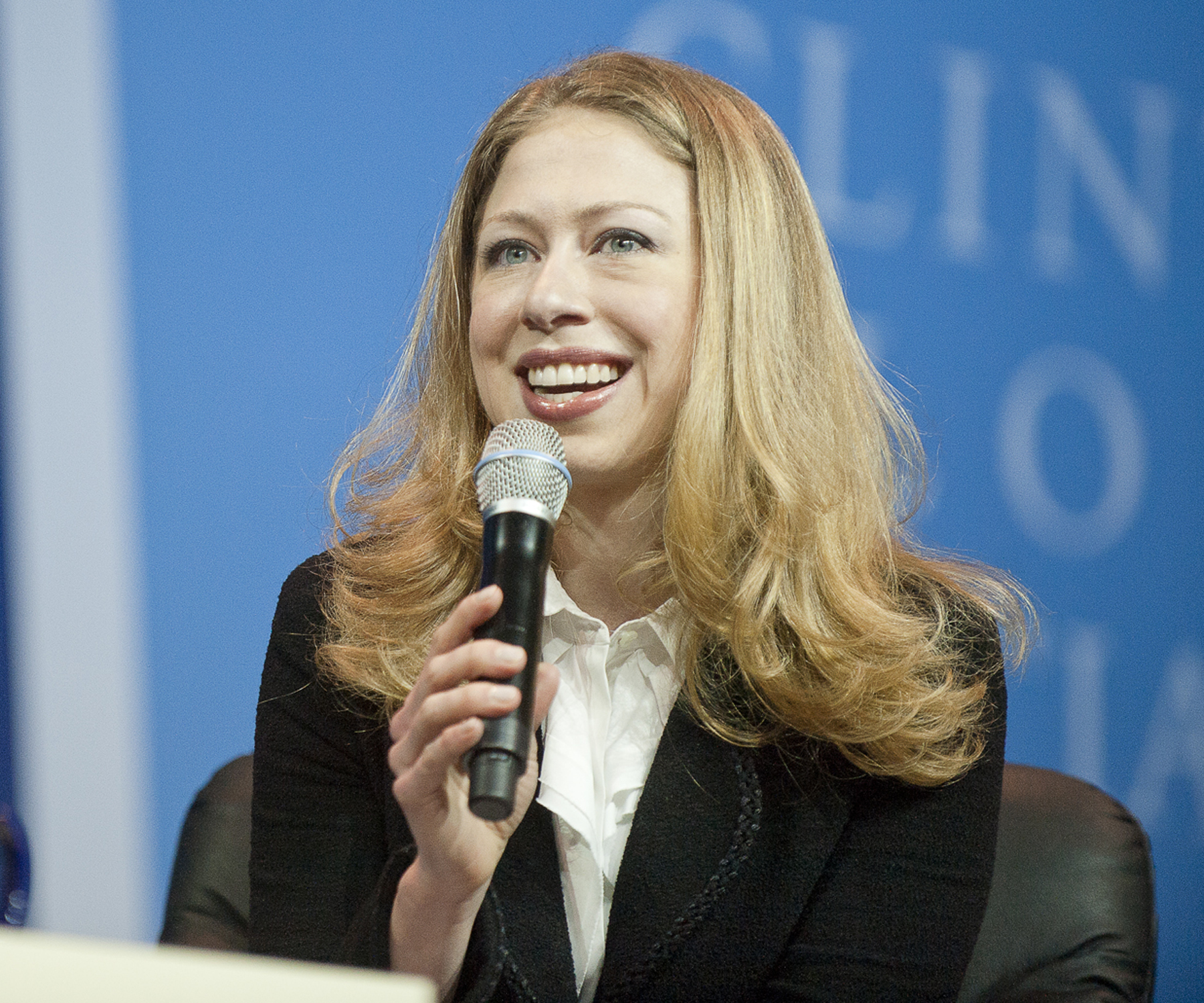
By mid-day Saturday, Oo and a half a dozen other UCSD students interviewed said they had found the conference uplifting. “What’s great about this conference is that it not only inspires you to pursue you own goals but also to feel more empowered,” said Christine Calabio.
She works on the Saltman Quarterly, an undergraduate biology research journal. She and three other UCSD students formed a team that plans to distribute the publications in all high schools in the San Diego Unified School District to get students interested in science. The team was admitted to CGIU for its efforts.
“We’re all here for the same goal: to make a positive difference,” Calabio said.
